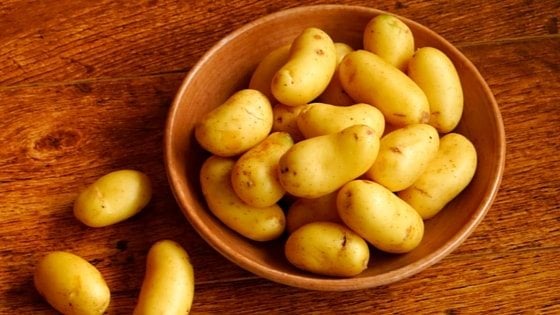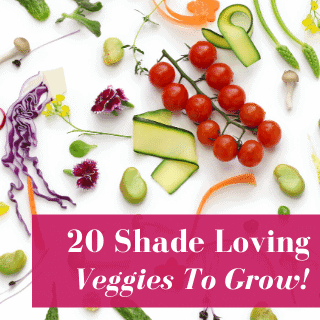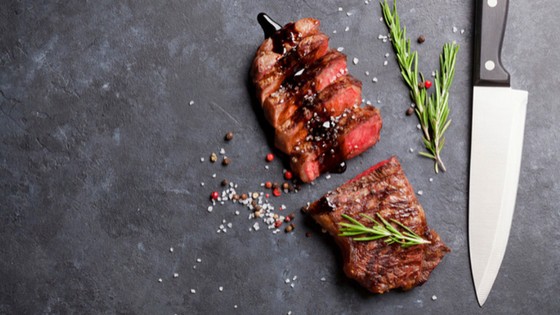One way I’ve increased my independence is by learning new homesteading skills.
And what’s an easier way to learn than by video?
Here’s 40 essential (and easy) homesteading skills for you to master!
Make laundry detergent
Making your own laundry detergent is probably one of the easiest homesteading skills to master on this list.
All it takes is a few ingredients to master this homesteading task. These ingredients are safe, and it’s exactly how I make my detergent.
If you’re a reader, check out my article about this homesteading must!
Snag them on Amazon here:
Graft fruit trees
When you graft trees, you increase your yield (over time) without having to wait for new trees to grow and produce fruits.
You can also graft your best trees on to healthy and hearty root stock for healthy trees that will last.
It’s one of many traditional skills our ancestors used to survive!
Kill a chicken humanely
Warning: This video is graphic.
She’s humane and very kind and her method is simple and straight forward without need for any specialized equipment.
To learn how to kill your own chickens to improve your homesteading skills, I recommend this guide. But fair warning.
Here’s a great article on 9 Knives for Homesteading Women. My favorite in the article is the Kershaw Chive.
Dehydrate vegetables off-grid
When you have too many peppers, you’ll wish to start preserving them. Learning how to dehydrate them off-grid is one of the best skills to learn – you can do it without any special equipment!
Can food
Canning food is one of the most essential homesteading skills to learn, and when your up to your ears in squash, it becomes pretty important.
Why?
Because you’ll want a way to save all that produce you harvest.
Here’s the exact mason jars I use!
Milk a goat
Milking a goat isn’t hard as far as homesteading skills go, but it can be tricky if you haven’t done it before.
The key is to not pull, but squeeze.
Be sure to use a stainless steel milking pail – much easier to sanitize!
Milk a cow
Milking a cow versus milking a goat are slightly different skills – but equally important.
Be sure to be safe as you practice. Like any large animal, cows can do a lot of damage to a person accidentally simply because of their size (speaking as a person who gets kicked by wayward colts a lot).
Light a fire in the rain
If you plan to preserve your produce by canning outside over a fire, knowing how to light a flame in the rain is one of those homesteading skills you should learn.
You don’t always get to choose the days you have available to preserve your harvest!
This is essential if you live off-grid as well.
Make butter
Making butter is one of those essential homesteading skills that’s super easy to try and master.
I don’t use a blender when making butter, but if you want to speed up the process, a blender will do that in a snap.
Make yogurt
I’m going to be honest, I use a Yogotherm to make yogurt, but learning to do it without a yogurt maker is one of those frugal homesteading skills to have.
Of course, using a yogurt maker is perfectly fine too.
When you have a dairy animal, you’ll want to find new ways to preserve all that milk!
Here’s the exact yogurt maker I use:
Make beeswax candles
One of the simplest skills to learn!
If you’re electricity goes out, or if you’re off grid, you’ll be glad to have this homesteading skill.
You can order beeswax and other candle-making supplies:
Make tallow candles
Using tallow is another way to produce candles for your homestead, and to use up the extra fat if you raise and butcher your own cattle (great skills to learn too!).
It’s easy, and way to use the whole animal, which is important when homesteading.
Here’s where to snag supplies:
Hatch chicks
If you want a sustainable chicken population, consider incubating eggs. It’s not one of the more difficult skills to learn, but it does take some knowledge and experience.
If you’re shopping for an incubator, I recommend one with a turner. It’s a little more pricey, but it pays off over time.
If you work all day, or if you have children, you don’t always have the time to turn eggs 3 times a day.
This is the exact model I use, and I’ve had great success.
https://www.youtube.com/watch?v=xGTaUIe-GZ4
Make soap using all-natural ingredients
Making soap safely is one of the easiest skills you can try at home, no matter where you are.
I do recommend using molds, since it will make the process smoother.
Be sure to take safety precautions – you will have to use lye, since it’s essential to this homesteading activity, but plenty of people successfully use it.
Use your best judgement.
Make a quilt
Once you decide on fabric and a pattern, quilt-making is a snap – it just takes time and patience.
Given the prices of quilts these days, if you have even a smidgen of sewing talent, you can put together a quilt, learning how to block and sew it, and save a ton with these homesteading skills.
Candle an egg
Candling and incubating are homesteading skills that take some experience to master, but once you get it, it’s super simple.
This video is on Day 10 of the incubation process – the day when you start to know pretty much which eggs are developing, and which are duds.
You can use any flashlight, but this is one I’ve had success with:
Save seeds
Seed saving is one of those skills essential to building a sustainable homestead.
You’ll produce fruits and vegetables that work well for your particular soil and year after year, your harvest will be better and better.
Ferment foods
For centuries, our homesteading ancestors fermented foods to preserve them, and get the most nutrition possible from their harvest.
It seems intimidating, but it’s one of those skills that will make you proud to be a homesteader. If I can do it, so can you. You just have to be sensible, and if anything looks or smells off, toss it.
Here’s 2 books I like:
Make sauerkraut
As an introduction to fermenting, consider sauerkraut. It’s pretty foolproof – and an easy homesteading skill to start with!
This kit is one I use, and it makes fermenting simple.
Sprout seeds to check viability
Let’s say you come across a packet of seeds, but they look pretty old. You don’t want to toss them, but you can’t waste garden space either (been there, done that!).
Here’s how to test those seeds for viability.
Grow fodder
If you’re looking for an easy way to reduce your feed expenses while raising the nutritional value of your grain, try to growing fodder.
This is one of those homesteading skills that’s easy to learn, and it increases the nutritional value of your feed up to 600%.
Preserve foods by making jams
You don’t just have to preserve strawberries, you can preserve any sort of fruit.
I have a guide about these homesteading skills, too, and this video is a great introduction.
If you plan to use pectin, consider finding a deal and buying in bulk – some recipes call for a whole packet. This is the brand I use:
Render lard
You’ll need to know how to render lard if you’re big into baking or have purchased a pig (or half a pig) to butcher.
Rendering lard is one of those homesteading skills that you can learn anywhere.
Make homemade apple cider vinegar
Homemade apple cider vinegar completely smokes store bought vinegar. When you taste the difference, you won’t go back.
Read my step-by-step guide about this essential homesteading skills!
Make organic lip balm
This is one of many very frugal homesteading skills that’s simple to master.
It’s pretty luxurious, being able to concoct a year’s worth of delicious, organic lip balm in the span of an afternoon.
Here’s what to buy:
Make lotion bars
Interested in another easy DIY project made with organic ingredients? Lotion bars are an easy option!
Although not specifically homesteading skills, these are still frugal options for beauty products (and a great way to spend an afternoon!). Here’s what to buy!
https://www.youtube.com/watch?v=4ofcAyXbkBE
Butcher a pig
If you’re going to have livestock, butchering them is one of those skills that will save you a ton of money.
This video is graphic (although you don’t see them actually killing the pig in this video), so be warned.
Build a compost bin
If you decide to save money on fertilizer, or want to use your manure productively, building a compost bin is a must. You don’t need specialized tools, either.
You can build a compost bin with pallets (make sure they’re safe for this kind of homesteading project!) or you can use new wood (make sure it’s heat treated, and not treated with chemicals).
Pasteurize milk
There’s lots of reasons to pasteurize your milk. Here’s an easy guide to doing it without any specialized (or expensive!) equipment.
Make cheese
Making cheese is a simple homesteading skill to master, and one that will increase your independence.
Try mozzarella first – it’s easy and requires few ingredients.
Right now, you can snag my free ebook about making cheese! Be sure to hop on my mailing list!
Clean a fish
Now that we’re building an aquaponic system, these are homesteading skills I need to get better at!
Whether you fish or raise fish to harvest, this tutorial is for you.
Give a goat an injection
When my goat was attacked by my dog, I relied on this homesteading tutorial to give her antibiotics, since I didn’t even know where on my goat to give an injection!
Before doing anything, though, I would talk to a vet (which is what I did).
Give a chicken an injection
Chickens are actually very easy to give injections to if you’ve never done it. I’m able to do it with my chickens without using the towel, but if you have a scared, flighty chicken, then you’ll definitely want to use a towel.
Break new ground for a garden
We established several new gardens this year, and breaking ground can be tough! Follow these steps to make it easier.
Make sausage
Just like anything homemade, sausage from scratch tastes so much better than anything store bought. Freshness just can’t be competed with. You can use any recipe, but here is a basic step-by-step guide.
Use a pressure cooker
You can use a pressure cooker to can homesteading goods such as bone broth, and you can use it to cook as well. While pressure cookers might have blown up a few years ago, now they’re pretty safe, as long as you use good judgement.
I’d love to hear from you!
Which homesteading skills are you working on? Which do you want to learn? Email me at editor@thefrugalchicken.com or comment below!
Maat van Uitert is a backyard chicken and sustainable living expert. She is also the author of Chickens: Naturally Raising A Sustainable Flock, which was a best seller in it’s Amazon category. Maat has been featured on NBC, CBS, AOL Finance, Community Chickens, the Huffington Post, Chickens magazine, Backyard Poultry, and Countryside Magazine. She lives on her farm in Southeast Missouri with her husband, two children, and about a million chickens and ducks. You can follow Maat on Facebook here and Instagram here.





![What Seedlings Can You Start In February? [Planting Guide]](https://thefrugalchicken.com/wp-content/uploads/2017/01/what-seedlings-can-you-start-in-february.jpg)



Awesome tutorials on the very things on my skills list… (‘liked’ on FB)!
Glad you like it! Thanks for liking it!
Thanks so much for taking the time to organize this list for others! I truly appreciate it!